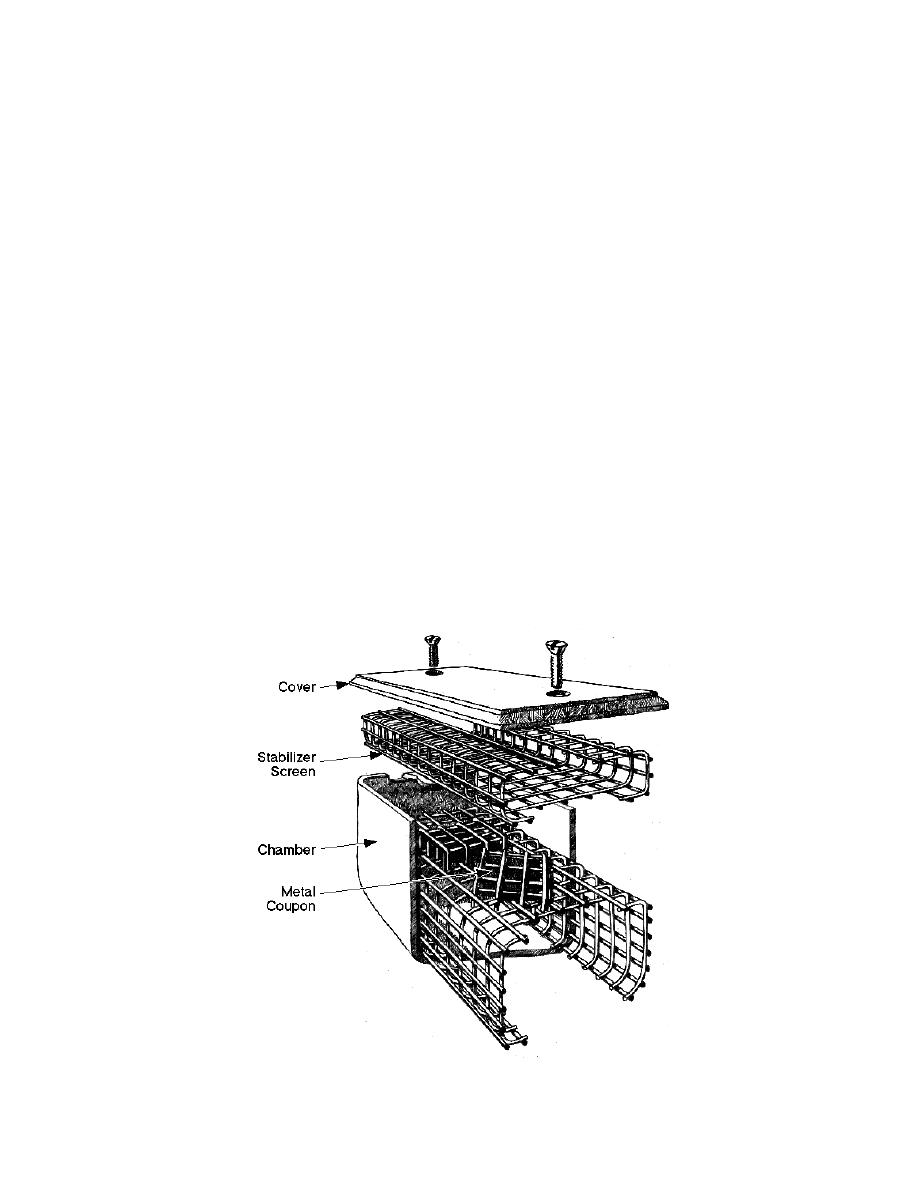
ous solutions of saturated sodium chloride. Both types
and in some places (along edges) the plating became
of metal coupons were then repeatedly heated to tem-
friable.
peratures greater than 1100F (593C). This size cou-
pon is large enough to hold a 5-L aliquot of acetoni-
Stock solutions of TNT, RDX, and HMX
The solubility of TNT in acetone is about 109 g per
trile or acetone on the surface during spiking, yet small
100 g at 20C, and the solubility is nearly as high in
enough to fit into, and lie flat on the bottom of, a stan-
acetonitrile. A concentrated stock solution was prepared
dard 40- or 20-mL VOA vial for residue recovery. When
by dissolving 1 g of TNT into 5 mL of acetonitrile (0.2
in this position (lying flat on the bottom of the vial),
g TNT/mL).
the coupon is submersed in 1 mL of extraction solvent.
The solubility of RDX in acetonitrile is about 12 g
per 100 g at 30C. To prepare a concentrated stock so-
Chambers
lution for RDX, 1 g was dissolved into 25 mL of aceto-
Chambers for housing one or more coupons (e.g.,
nitrile (0.04 g RDX/mL).
an aluminum and steel coupon), a small piece of range
The solubility of HMX in acetonitrile is about 2 g
scrap, and perhaps a thermocouple, were made from
per 100 mL. To prepare a concentrated stock solution,
standard zinc-plated-steel electrical switch boxes (Fig.
0.1 g was dissolved in 5 mL of acetonitrile (0.02 g HMX/
1). These boxes had four 4.7-mm holes in the bottom,
mL). Several of the larger crystals (0.25 0.25 mm) of
and had an additional 4.7-mm hole drilled into each of
the four side walls. Zinc-coated wire fencing (6.4 6.4
HMX did not dissolve when this stock solution was
prepared, so a concentration lower than 0.02 mg/L was
mm) was molded into platforms to hold coupons firmly
anticipated.
near the center of the chamber, while leaving space for
a small (less than 2.5 5 2.5 cm [h, l, w]) piece of
All stock solutions were transferred to amber glass
range scrap. If necessary, a thermocouple could also be
bottles with Teflon-lined septum screw caps that were
stored at room temperature. Periodically, the threads of
located within the chamber by removing one of the
these bottles needed to be wiped with a solvent-moist-
knock-out tabs and using a standard metal wire lock to
ened towel to remove a deposit of crystals. The forma-
secure the wire lead. This chamber and wire mesh cage
did not physically deform when exposed to 1100F
tion of crystals and difficulties encountered in the prepa-
(593C) for 6 hours. However, this thermal treatment
ration of these concentrated solutions were two
unforeseen problems that should be addressed in the
did turn the zinc plating to a white or yellowish color,
Figure 1. Chamber for housing one or more coupons.
3



 Previous Page
Previous Page
